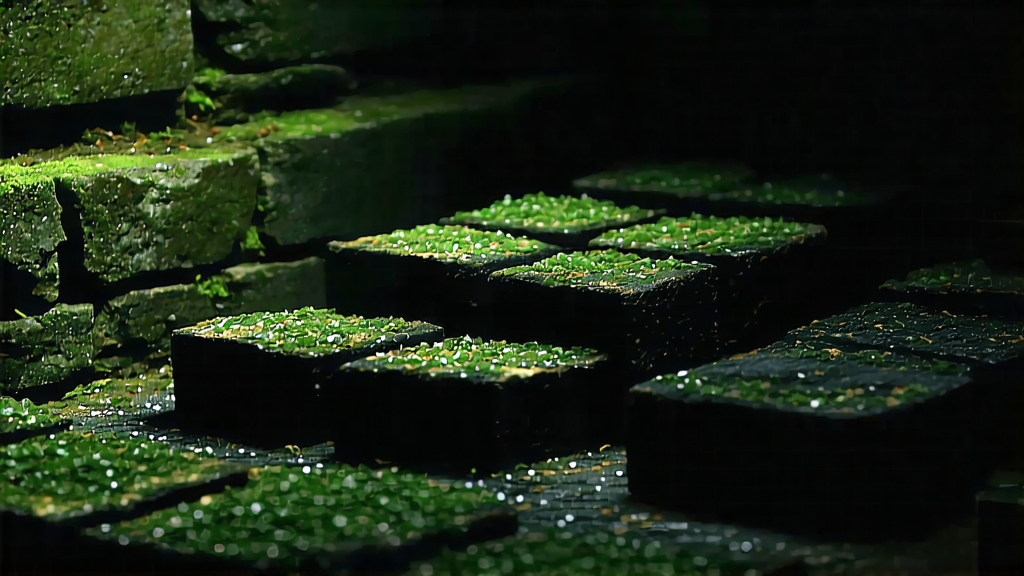
Tucked away in the humid mountains of southern Guangxi, Liu Bao (literally “Six Forts”) is the quiet genius of China’s dark-tea family. While Pu-erh grabs the headlines, Liu Bao has spent four centuries perfecting the art of subtlety, evolving from a frontier ration for Ming soldiers into a collector’s darling that fetches auction prices rivaling first-growth Bordeaux. To understand Liu Bao is to witness geology, microbiology, and human patience colliding in a bamboo basket.
History: From Military Ration to Maritime Currency
The story begins in 1585, when the Ming court, desperate to prevent malaria among troops garrisoned along the southern border, requisitioned large-leaf tea from Cangwu County. Compressed into 40-kilogram baskets, the leaves sailed down the Liu Bao River to Wuzhou, then onward to the Pearl River Delta. By the Qing dynasty, Liu Bao had become a medium of exchange in the Maritime Silk Road; a single basket could buy a half-year’s salt for a fishing fleet. Sailors noticed that the tea improved after monsoon voyages, its raw astringency mellowed by the heat and brine of ship holds. Thus the concept of “wet storage” was born centuries before modern climate-controlled cellars.
Micro-terroirs within 50 km
Unlike Pu-erh’s vast Yunnanese canvas, Liu Bao’s entire appellation fits into a narrow 50-kilometer radius around the towns of Liubao and Shiqiao. Within this micro-terroir, three sub-zones emerge:
- Gao Shan (High Mountain): 600–800 m, granite soils, morning fog—tea here develops orchid nose and a cooling menthol finish.
- He Chuang (River Bed): alluvial loam, higher humidity—leaves pick up a hint of petrichor and ripe banana.
- Huang Ni (Yellow Clay): iron-rich earth, cooler nights—yields the most tannic leaf, ideal for 30-year aging.
The Leaf: A Camellia sinensis var. assamica Hybrid
Local farmers propagate a peculiar hybrid that botanists call “Guangxi large-leaf #8.” Its cell walls are 12 % thicker than Yunnan Dayezhong, allowing the leaves to withstand the repeated wet-piling unique to Liu Bao without collapsing into compost. The buds are coated in a downy silver that turns golden after fermentation, earning the nickname “tiger brows.”
Craft: The Double Fermentation Dance
Liu Bao is the only dark tea that undergoes two distinct fermentations separated by a resting phase.
Step 1: Sha Qing (Kill-Green) – Leaves are pan-fired at 280 °C for 90 seconds, just enough to halt oxidation while preserving endogenous enzymes.
Step 2: Rolling – A 45-minute machine roll ruptures 65 % of cell walls; the twist is looser than green tea to leave air channels for microbes.
Step 3: First Pile – 500 kg batches are stacked 70 cm high, misted to 38 % moisture, and covered with hemp cloth. Internal temperature climbs to 55 °C within 24 hours; thermophilic Aspergillus niger and Bacillus subtilis dominate. After 10 days the pile is broken down; leaves have turned ochre and smell of wet cacao.
Step 4: Basket Steam & Press – The semi-fermented leaf is steamed for 8 seconds, then tamped into 40 kg bamboo baskets lined with wild banana leaf. The banana leaf inoculates the tea with Lac tobacillus, a lactic acid bacterium unique to Liu Bao.
Step 5: Second Fermentation – Baskets are stored in underground cellars dug into yellow-clay hills. Humidity hovers at 88 %, temperature at 28 °C year-round. Here the tea rests for a minimum of three years, during which slow anaerobic fermentation converts catechins into theaflavins and generates a signature “betel-nut” aroma (a synergy of geosmin and β-ionone).
Step 6: Post-Fire – Before release, the baskets are opened and the tea given a final charcoal bake at 80 °C for six hours to stabilize moisture at 9 %.
Aging Curve: The 3-7-15 Rule
Liu Bao does not improve linearly. Year 3 marks the end